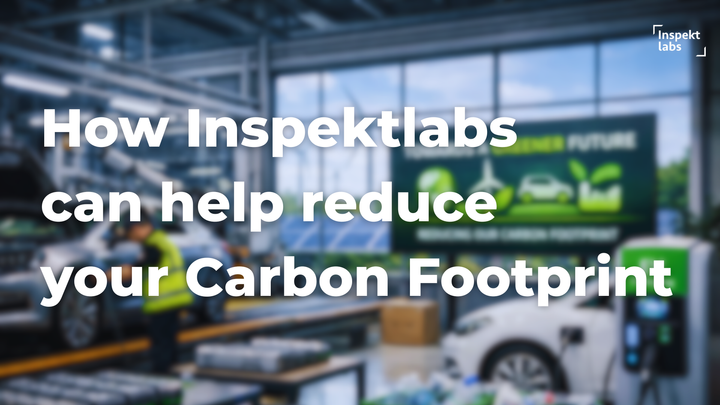The evolution of vehicle inspections - Exploring the past, present, and future
In this blog, we are visiting the past, present, and future of vehicle inspections, looking at the journey this industry has seen so far and what we can expect to see in the future.
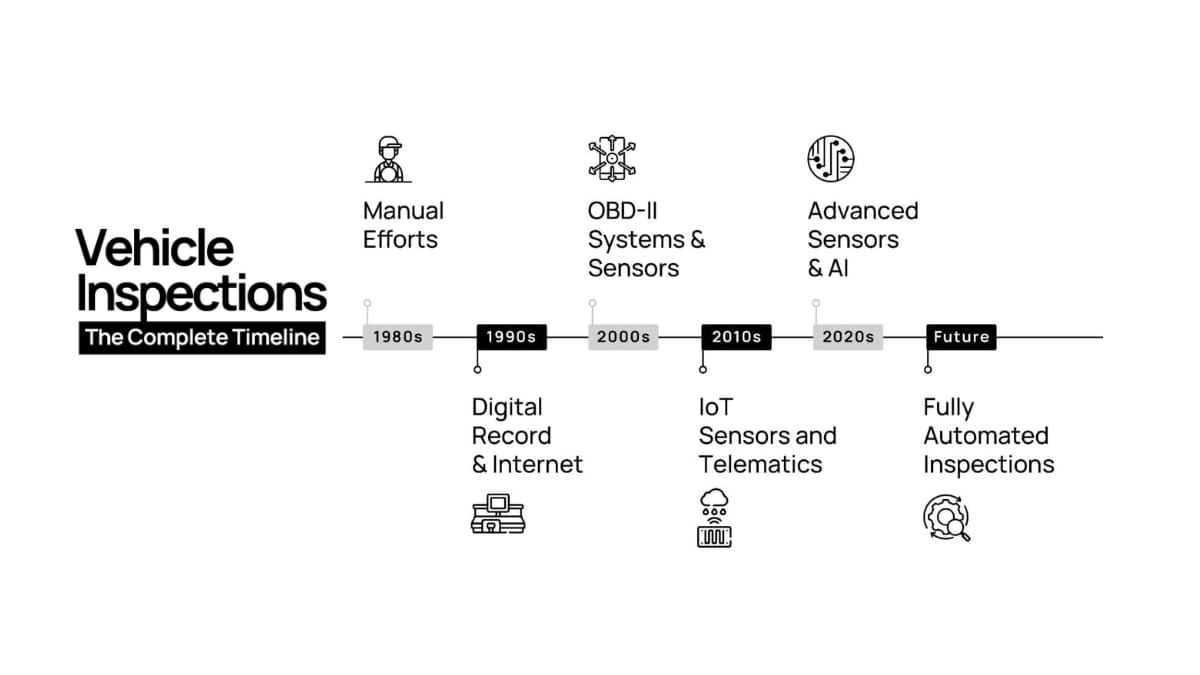
Vehicle inspections, along with vehicles themselves, have gone through a lot of change over the years.
The tech used in vehicles have been subject to some serious evolution, the impact of which have been seen in vehicle inspections as well - all with a simple goal in mind - reducing effort and time while improving efficiency.
In this blog, we are visiting the past, present, and future of vehicle inspections, looking at the journey this industry has seen so far and what we can expect to see in the future.
Table of contents -
- The 1980's - Early days
- The 1990's - Rise of digital documentation
- The 2000's - Early steps in evolution
- The 2010's - Smart cars and smart car inspection systems
- The 2020's - Vehicle inspections in the present day
- The future of vehicle inspections
The 1980's - Early days
Let's start with the 1980's.
During this time, vehicles were mostly mechanical running on multiple gears and shafts. Electronic systems didn't exist at the time and vehicle diagnosis could be done only by a certain set of "experts" who understood its functioning.
- Vehicle inspections were a fully manual process and took almost 2-4 days for a proper inspection. More often than not, these "experts" had to travel across the country for just an inspection.
- Documentation was manually done and even included Kodak cameras and print-outs to collect visual proof. Sending reports and receiving feedback/replies meant a long communication cycle since everything was done via post.
- Careful documentation of every inspection report was very important. One misplaced piece of paper meant a big vehicle malfunction going completely unnoticed.
- Since electronic systems for vehicle assessment didn't exist back then, assessing and repairing vehicle damage was possible only after it had occurred.
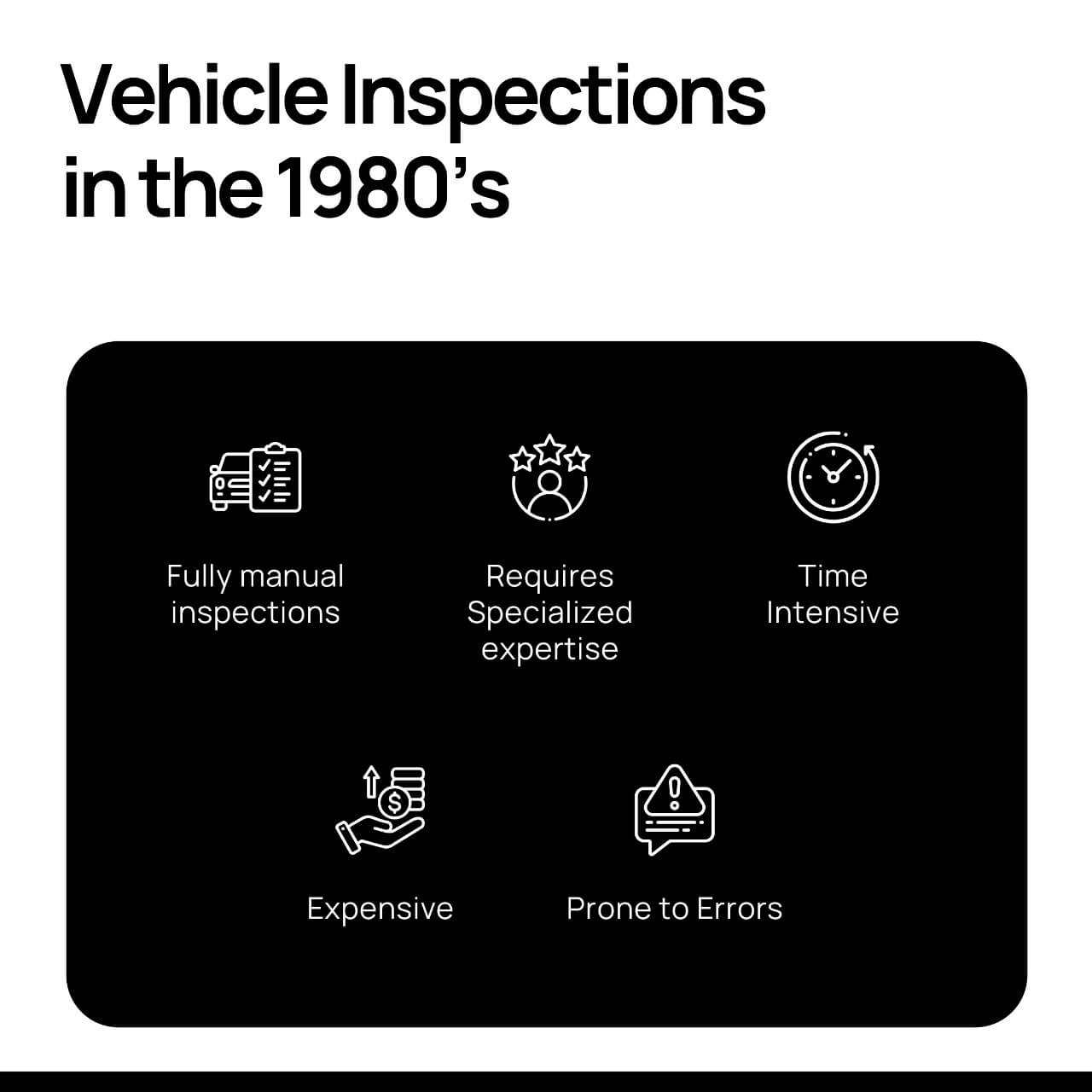
The 1990's - Rise of digital documentation
The 1990's saw the rise of computers which also meant the era of digitization.
During this time, the industry moved away from heavy paperwork and started maintaining centralised data systems for tracking and managing vehicle history.
While inspections were still manual, digitally stored documents made communication a lot faster and data storage was clutter-free and easily accessible for everyone.
The 2000's - Early steps in evolution
This was the first time when we started seeing early iterations of modern-day diagnostics systems.
During the 2000's, cars came built-in with OBD-II sensors that helped track the internal systems of the car i.e vehicle inspections were less manually-driven.
However, they came with their own set of challenges -
- These systems were capable of detecting only a handful of faults which meant car inspections still needed a lot of manual intervention for detailed inspections.
- These systems weren't 100% reliable and were prone to false positives. For example, a loose gas cap could be reported as an emission problem (which meant a bigger fault in the car).
- OBD-II systems weren't cheap back in the day. While the basic systems cost around $100-$200, professional-grade diagnostic machines could set you back by almost $2000.
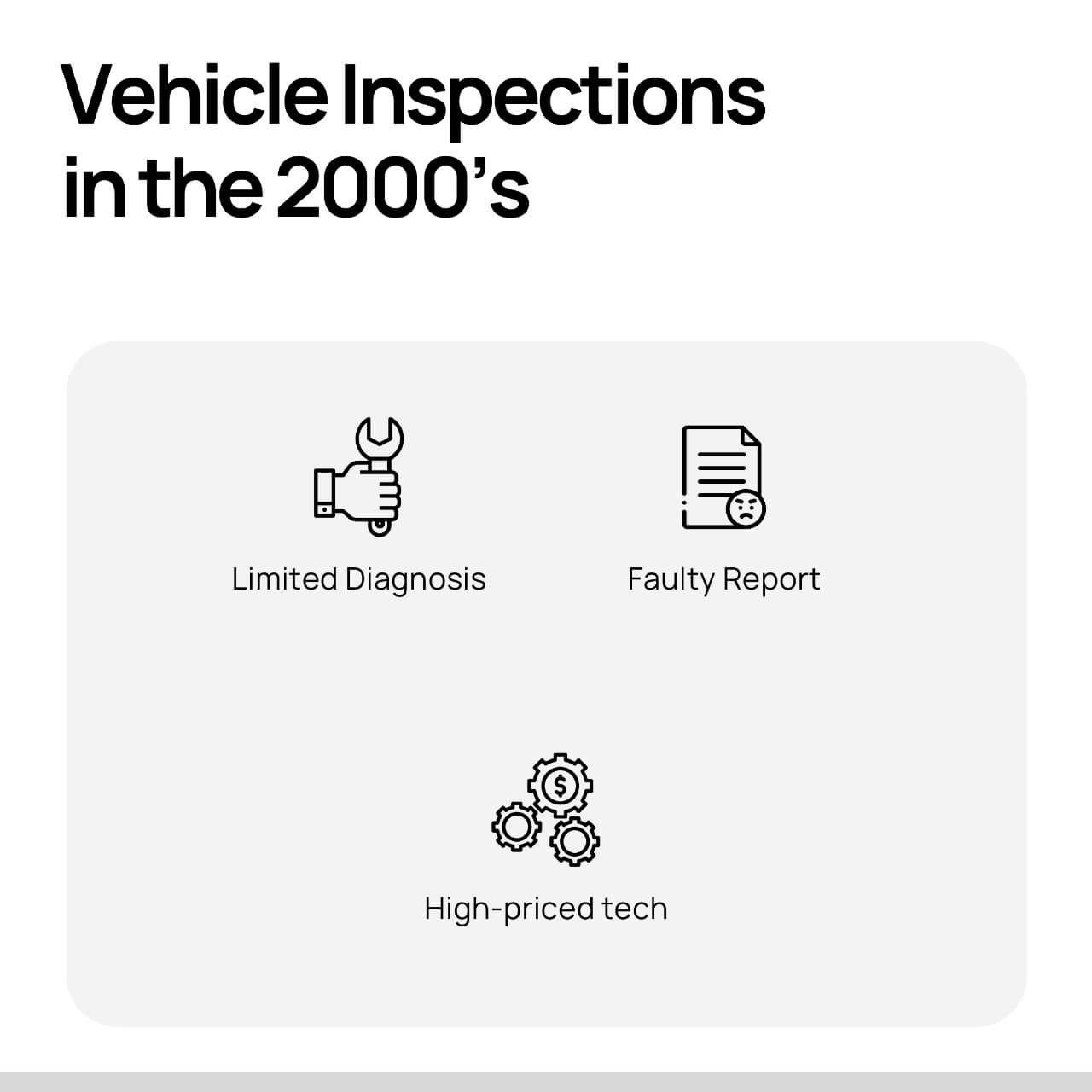
The 2010's - Smart cars and smart car inspection systems
The 2010's saw a big technological leap as vehicles and vehicle inspections started getting smarter with the introduction of a ton of electronics.
A lot of interesting tech such as telematics and IoT sensors to detect more intricate details of your vehicle came pre-built with the machine. This meant that technicians could better understand the condition of your vehicle based on its usage patterns and could predict and prevent future vehicle damage.
But were they 100% fool-proof? Well, not really.
- These sensors were quite prone to malfunctions which would often result in inaccurate reports.
- To avoid this, these sensors required regular maintenance - an additional overhead for car owners and technicians.
- Data collected from these sensors were still scattered and needed to be properly collated and interpreted which often left technicians overwhelmed.
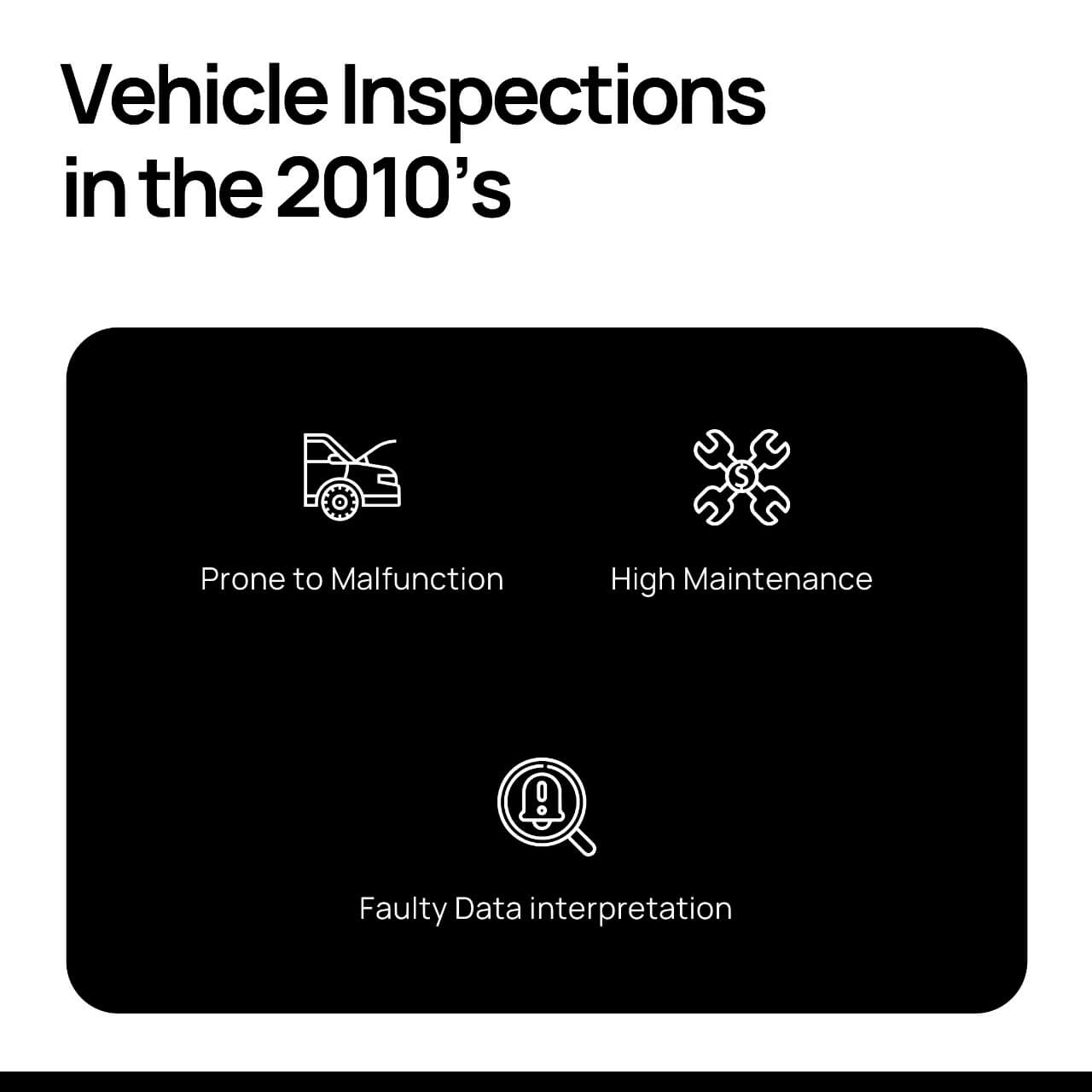
The 2020's - Vehicle inspections in the present day
Fast forward to today, the era of super-fast Internet and Artificial Intelligence - both acting as major enablers to a whole new set of tech in vehicle inspections.
Thanks to today's super-efficient sensors combined with the power of super-fast internet, monitoring a vehicle's health in real-time has become a piece of cake. Combine this with the tech on your smartphone and this enables technicians to send you real-time alerts on how your vehicle is performing.
Adding on to this, many companies like Inspektlabs are now using the power of AI to make damage detection and reporting a whole lot easier for everyone - be it an inspector, a technician fixing the car, or vehicle owners themselves.
Check out - Car damage detection using AI: Methodology and approach for high accuracy
How Inspektlabs is leading the AI revolution in vehicle inspections
We at Inspektlabs are committed to revolutionizing the vehicle inspection industry while using the power of AI to drive this innovation.
Our proprietary AI-powered model (trained on over 7M images and videos of vehicle damage) is built to understand the real-world complexities of damage detection while using a customized neural network (patent pending) to fully assess a vehicle's condition in any environment.
Also read - Manual inspections vs. Automated vehicle inspections.
With Inspektlabs' damage detection model, technicians and vehicle inspectors can -
- Cut down costs by 90% and reduce manual inspection overheads.
- Increase inspection accuracy and decrease cases of faulty reporting.
- Reduce the time and effort required for manual inspections and use their human capital more efficiently.
- Easily interpret inspection results with real-time detailed reports.
- Minimise the risk of fraud and document tampering.
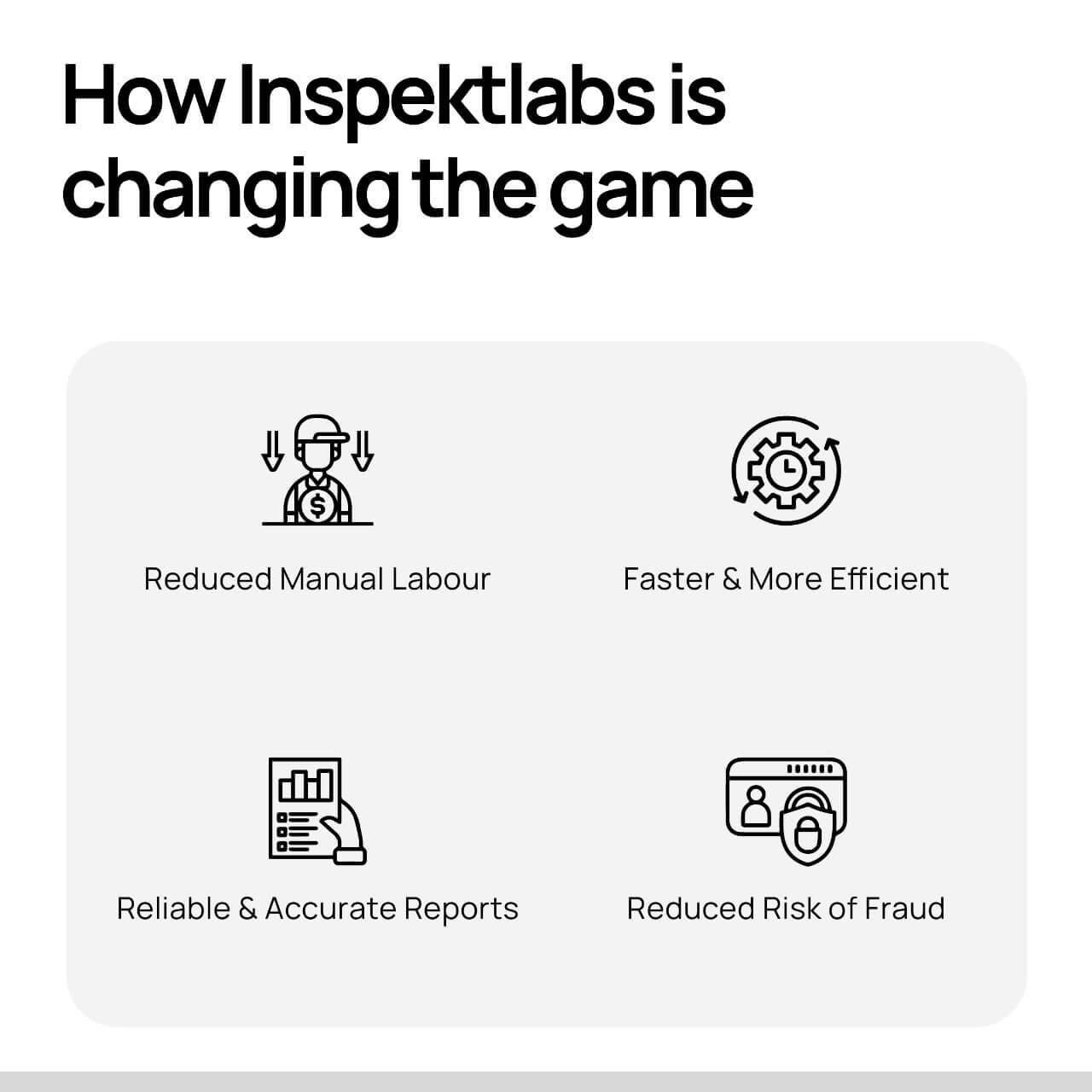
We also partnered with multiple Estimatics experts to provide accurate repair and replacement costs, with a better value for money.
However, today's version of AI-powered models come with its own set of challenges.
While today’s AI models can help improve efficiency, they aren’t 100% accurate (yet) and come with their own set of challenges. For example -
- Non-visual damage detection such as engine malfunction, fuel injection issues, road worthiness etc. still requires manual efforts.
- Small cracks and damages might get ignored.
- The quality of the report is highly dependent on the hardware used (camera quality, processor speed etc.)
While some of these challenges can easily be overcome using the right sensors and telematics in the vehicle, the future of car inspections looks very promising and we can expect some bigger innovations being added to vehicles in the coming years.
The future of vehicle inspections
We are currently in a new era of innovation where both hardware and software is growing rapidly.
As Artificial Intelligence gets smarter, manual efforts are slowly becoming a thing of the past. Along with this, manufacturers are spending a lot of time on research and development to make vehicle hardware even more efficient.
This new-age hardware and software put together will unlock a whole new world of opportunities for using vehicle inspection tech skillfully. It won't be very long before we start seeing newer innovations that make car inspections a lot more efficient.
Some of these innovations include -
- Predictive maintenance systems using smart hardware and AI to assess a vehicle's performance and prevent potential vehicle damage in the future.
- Autonomous inspection systems that can run fully automated diagnosis without any human intervention.
- New block-chain tech for transparent data keeping and reduced risk of fraud.
- Drone-based inspections that can run 360° scans of your vehicle.
- New-age sensors that come built into the car. For example –
- Vibration and stress sensors that read vehicle patterns to alert the user in case of irregularities.
- Capacitive and inductive sensors using electric and magnetic fields to read fluid levels and track engine functions.
- Thermal and infrared sensors tracking engine and exhaust temperatures.
- Optical and fiber optic sensors to read the internal functioning of vehicles.
Conclusion
The vehicle inspection industry has come a long way - evolving from manual processes to advanced AI-powered solutions.
Each decade has brought innovations that have improved the speed, accuracy, and efficiency of inspections, with the 2020's making a significant leap thanks to AI, smart sensors, and real-time data processing.
However, these models can further improve, specifically in areas like detecting non-visual damage, or increased data transparency.
The future already looks promising with tech like Predictive maintenance systems, autonomous inspections, and many advanced sensors making car inspections more reliable and accessible.
The next wave of innovation will continue to build on this foundation laid by current advancements, making the vehicle inspection process smoother and more precise than ever before.
Ready to experience the future of vehicle inspections?
Explore how Inspektlabs' AI-powered solution can revolutionize your inspection process, cut costs, and increase accuracy for vehicle inspections.
Check out our platform today and see how we're driving the future of vehicle inspections!


